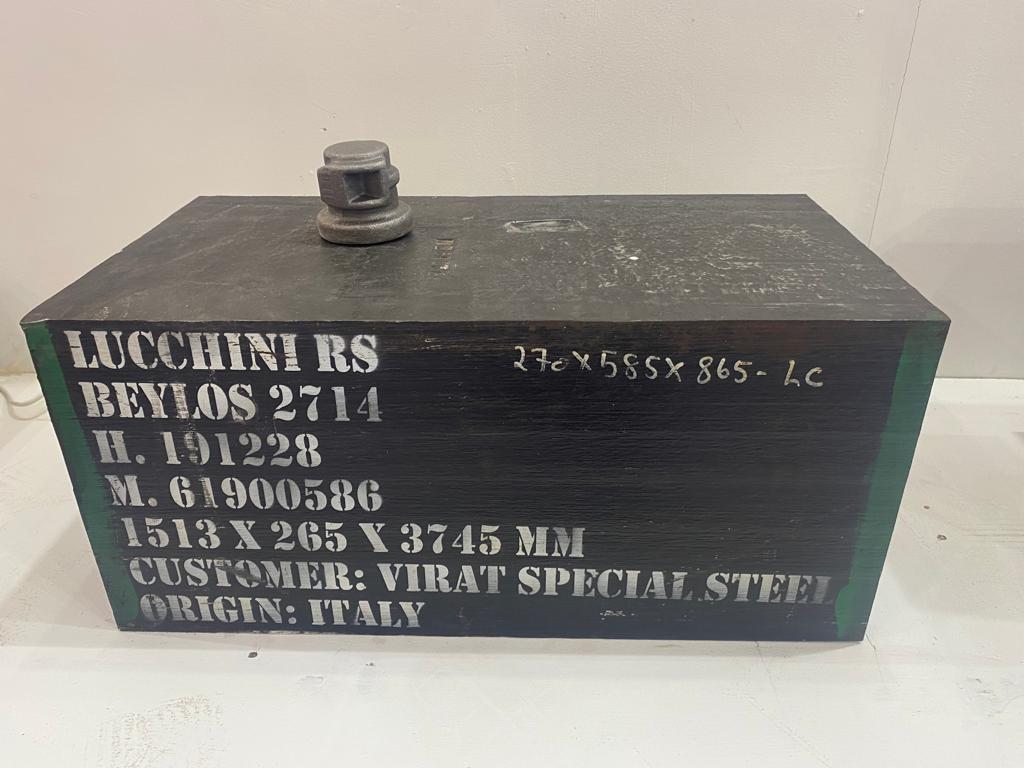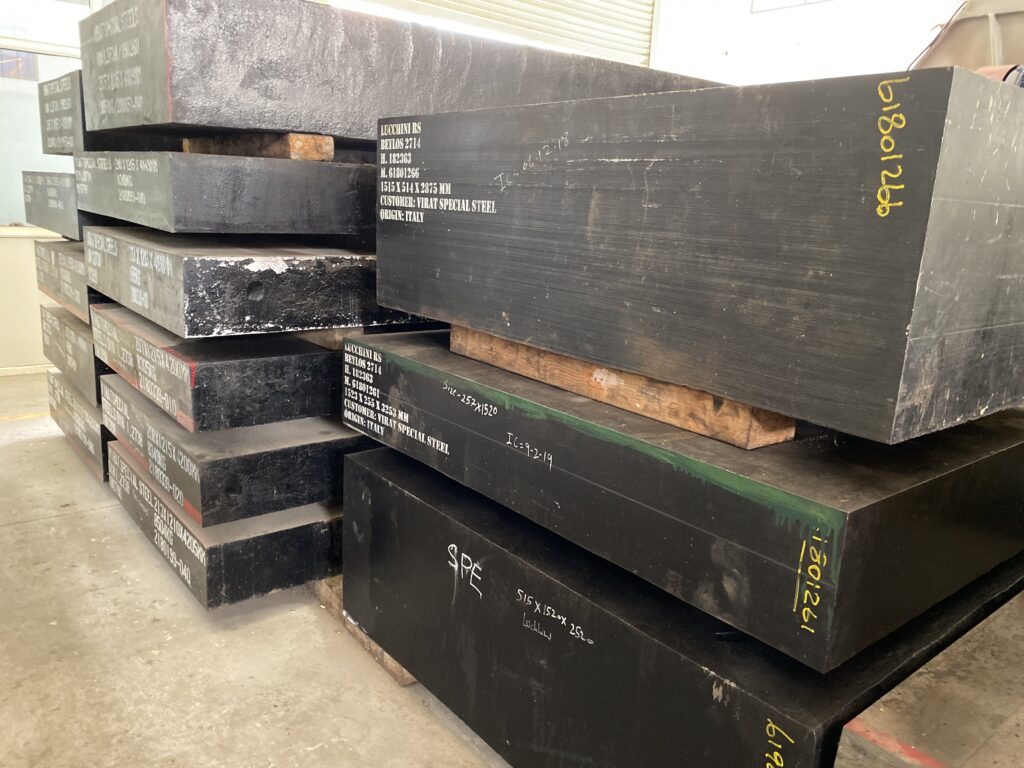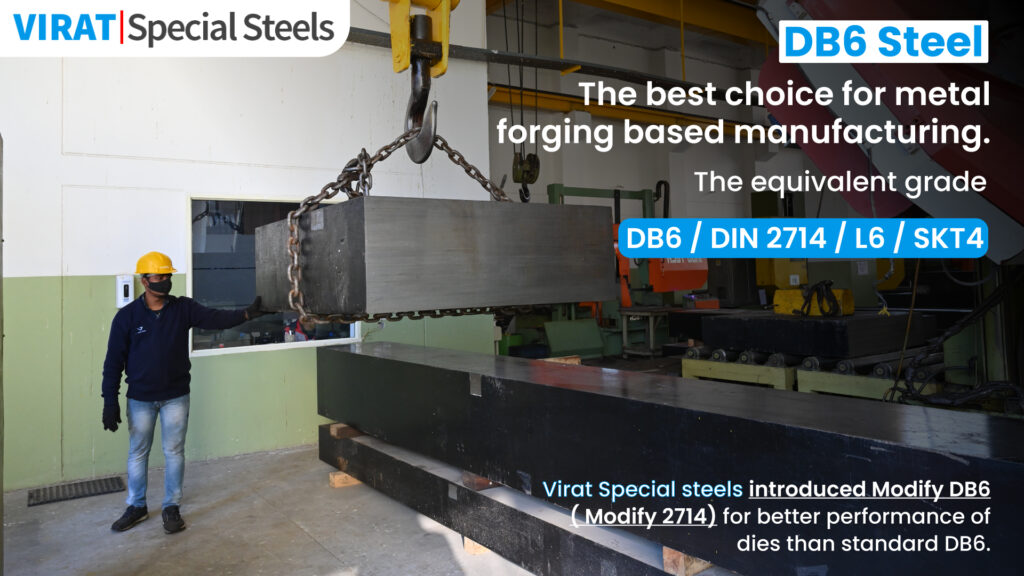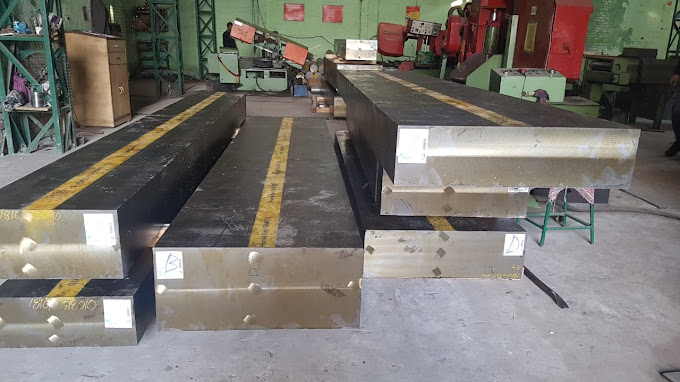1. Introduction
DIN 2714 steel, also known as 1.2714 or DB6, is a hot work tool steel renowned for its exceptional toughness, wear resistance, and ability to withstand high temperatures. These attributes make it a preferred choice in industries such as automotive, aerospace, and metalworking, where durability and performance are paramount. However, to fully harness the potential of DIN 2714 steel, appropriate heat treatment processes are essential. These treatments enhance the steel’s mechanical properties, ensuring it meets the rigorous demands of various applications.
2. Chemical Composition of DIN 2714 Steel
Understanding the chemical composition of DIN 2714 steel is crucial, as each element contributes to its overall characteristics:
- Carbon (C): 0.50-0.60%
- Silicon (Si): 0.10-0.40%
- Manganese (Mn): 0.50-0.90%
- Chromium (Cr): 1.00-1.50%
- Nickel (Ni): 1.50-1.80%
- Molybdenum (Mo): 0.45-0.55%
- Vanadium (V): 0.10-0.25%
Each of these elements plays a pivotal role:
- Carbon: Enhances hardness and strength.
- Silicon: Improves strength and elasticity.
- Manganese: Increases toughness and hardenability.
- Chromium: Boosts hardness, tensile strength, and resistance to wear and corrosion.
- Nickel: Adds toughness and impact strength.
- Molybdenum: Enhances hardenability and high-temperature strength.
- Vanadium: Refines grain structure, increasing strength and toughness.
3. Mechanical Properties Post Heat Treatment
The mechanical properties of DIN 2714 steel can be significantly enhanced through proper heat treatment:
- Hardness: Achievable up to 50-55 HRC (Rockwell C scale).
- Tensile Strength: Ranges between 1000-1400 MPa.
- Yield Strength: Approximately 1045 MPa.
- Elongation: Between 15-20%, indicating good ductility.
- Impact Toughness: Approximately 20-25 J/cm², showcasing its resilience under stress.
These properties make DIN 2714 steel suitable for applications requiring a balance of hardness and toughness, such as forging dies and die-casting tools.
4. Heat Treatment Processes for DIN 2714 Steel
Heat treatment is a controlled process of heating and cooling metals to alter their physical and mechanical properties without changing the product shape. For DIN 2714 steel, the primary heat treatment processes include:
- Annealing
- Hardening
- Tempering
- Stress Relieving
- Nitriding
Each process serves a specific purpose in enhancing the steel’s performance for various applications.
5. Annealing Process
Purpose: Annealing softens the steel, improving its machinability and relieving internal stresses accumulated during manufacturing.
Procedure:
- Heating: Gradually heat the steel to a temperature between 740-760°C.
- Soaking: Maintain this temperature to ensure uniform heat distribution.
- Cooling: Allow the steel to cool slowly in the furnace at a maximum rate of 10°C per hour down to 600°C, followed by air cooling.
Expected Outcomes: Post-annealing, the steel achieves a maximum hardness of approximately 255 Brinell, making it more workable for subsequent machining operations.
6. Hardening Process
Objectives: Hardening increases the steel’s hardness and strength, preparing it for demanding applications.
Procedure:
- Preheating: Heat the steel uniformly to 650-700°C.
- Austenitizing: Increase the temperature to the hardening range of 900-950°C.
- Quenching: Rapidly cool the steel in oil or air to transform its microstructure, achieving the desired hardness.
Quenching Mediums:
- Oil Quenching: Provides a slower cooling rate, reducing the risk of distortion and cracking.
- Air Quenching: Suitable for intricate shapes where minimal distortion is crucial.
Effects: Proper hardening results in a hardness of approximately 57 HRC when oil quenched and 55 HRC when air quenched.
7. Tempering Process (Continued)
Temperature Effects:
- 400°C: Results in a tensile strength of approximately 1400 MPa with a hardness around 55 HRC.
- 500°C: Balances hardness (50 HRC) and toughness, suitable for die-casting applications.
- 600°C: Lowers hardness to around 45 HRC but significantly increases toughness, making it ideal for impact-resistant applications.
Tempering is a crucial step, as it refines the microstructure, reducing internal stresses that could lead to cracking or premature tool failure.
8. Forging Guidelines for DIN 2714 Steel
Forging is a key process for shaping DIN 2714 steel into tools, dies, and heavy-duty components. Proper forging techniques ensure improved mechanical properties and extended tool life.
Optimal Forging Temperature:
- Initial Heating: 1150-1180°C
- Final Forging Temperature: 900-950°C
Best Practices for Forging:
- Preheat Slowly: Gradually heat the steel to avoid thermal shock.
- Avoid Overheating: Excessive temperatures can cause grain coarsening, reducing toughness.
- Uniform Heating: Ensure even heat distribution to prevent cracking.
- Controlled Cooling: After forging, cool the steel in warm sand or a furnace to prevent stress buildup.
Post-forging heat treatments such as normalizing or annealing are recommended to restore desirable properties.
9. Stress Relieving Techniques
Stress relieving is essential for minimizing internal stresses in DIN 2714 steel, particularly after machining, forging, or welding.
Procedure:
- Heat the steel to 600-650°C.
- Hold at this temperature for 1-2 hours per 25mm thickness.
- Cool slowly in the furnace.
Benefits:
- Prevents warping or dimensional changes in finished components.
- Reduces the risk of stress-induced cracks.
- Improves overall tool performance and longevity.
10. Nitriding Process
Nitriding is a surface-hardening process that significantly improves wear and corrosion resistance.
Steps for Nitriding:
- Preheating: Heat the steel to around 500-530°C.
- Ammonia Gas Exposure: Introduce ammonia gas to form a hard nitride layer.
- Soaking Time: Maintain the temperature for 10-40 hours, depending on depth requirements.
- Cooling: Allow slow cooling in an inert atmosphere.
Advantages:
- Enhances surface hardness up to 65 HRC.
- Increases wear resistance, making it ideal for die-casting applications.
- Retains core toughness while hardening only the surface.
Nitriding is highly beneficial for extending tool life in demanding industrial environments.
11. Cold Working Considerations
Cold working involves shaping DIN 2714 steel at room temperature, which improves strength through strain hardening.
Recommended Practices:
- Use moderate deformation to prevent excessive work hardening.
- Perform intermediate annealing if extensive deformation is required.
- Ensure proper lubrication to minimize friction and tool wear.
Although DIN 2714 steel is not typically cold-worked due to its high toughness, some applications may benefit from minor cold-forming operations.
12. Welding Recommendations for DIN 2714 Steel
Welding DIN 2714 steel requires careful attention to preheating and post-weld treatments to prevent cracking.
Best Welding Practices:
- Preheat to 250-300°C before welding to reduce thermal shock.
- Use low-hydrogen electrodes to prevent hydrogen embrittlement.
- Perform post-weld heat treatment at 600-650°C to relieve residual stresses.
Challenges & Solutions:
- Cracking Risk: Preheating helps prevent cracking.
- Distortion: Use controlled welding techniques to minimize warping.
- Hardness Variations: Post-weld tempering balances hardness and toughness.
With proper welding techniques, DIN 2714 steel can be successfully used in fabricated components requiring high strength.
13. Common Applications of DIN 2714 Steel
DIN 2714 steel is widely used in industries requiring durable, heat-resistant materials.
Key Applications:
- Hot Work Tooling: Forging dies, extrusion dies, and hot stamping tools.
- Die-Casting Molds: Ideal for aluminum and magnesium die-casting due to its thermal stability.
- Industrial Machinery: Components exposed to high temperatures and mechanical stress.
- Aerospace and Automotive: Used in heavy-duty components requiring impact resistance.
Its combination of hardness, toughness, and wear resistance makes it a preferred material in high-performance applications.
14. Maintenance of Heat-Treated DIN 2714 Tools
Proper maintenance extends the life of tools made from DIN 2714 steel.
Best Practices:
- Regular Inspection: Check for cracks, wear, and deformation.
- Re-Tempering: If hardness decreases, consider re-tempering to restore properties.
- Surface Treatment: Apply coatings like nitriding to enhance wear resistance.
- Lubrication: Use high-quality lubricants to minimize friction and overheating.
A well-maintained tool retains its performance, reducing downtime and production costs.
15. Conclusion
Heat treatment plays a crucial role in optimizing the performance of DIN 2714 steel. From annealing and hardening to tempering and nitriding, each process enhances the steel’s mechanical properties, making it ideal for demanding applications. By following best practices in forging, stress relieving, and maintenance, industries can maximize the lifespan and efficiency of DIN 2714 steel components.
For those seeking high-performance tool steels, DIN 2714 remains a top choice due to its superior combination of toughness, hardness, and wear resistance.
FAQs
1. What is the best quenching medium for DIN 2714 steel?
Oil quenching is preferred as it provides a balanced hardness while minimizing distortion and cracking risks.
2. Can DIN 2714 steel be nitrided after heat treatment?
Yes, nitriding after heat treatment enhances surface hardness without affecting the core toughness.
3. What is the ideal tempering temperature for DIN 2714 steel?
The ideal tempering temperature depends on application needs but typically ranges between 400-650°C.
4. Is welding recommended for DIN 2714 steel?
Yes, but preheating and post-weld stress relief are necessary to prevent cracking and hardness variations.
5. How can I increase the lifespan of DIN 2714 tools?
Regular maintenance, re-tempering, and surface treatments like nitriding can significantly extend tool life.




